Don't wanna be here? Send us removal request.
Text
Hi Lainey,
Thank you for sharing your ethics as a developing nature interpreter and the experiences that have shaped your beliefs, responsibilities, and preferred approaches. I found your post quite intriguing, particularly the cultural influences you discuss that have shaped your relationship with nature. For me growing up, traditions and cultural practices were not super common in my home so it is interesting to learn how other families integrate sacred ceremonies into their lives. Moreover, the traditions we did have never really had the beautiful connection with nature that you speak of in your culture. I found it super insightful to read about the kinship with land, Dia de los Muertos, and other ways in which cultural backgrounds have influenced your connection to the environment. Needless to say, it is important as developing nature interpreters to recognize our cultural differences and how that might influence interpretation.
Your preferred approach highlights an area of nature interpretation that needs to be improved on: accessibility for all. I think you would make a great influence just based on reading your own cultural influences on your relationship with nature, as well as your passion for making interpretation more inclusive and equitable! Beck et al (2018) suggest one way to reduce cultural barriers through personally “inviting, including, involving” minority groups. For instance, rather than relying on a website to generate participants and have people come to nature interpretation, interpreters can go to people and provide personal invitations at say a church or social club (Beck et al., 2018).
Cheers,
Kiera
References Beck, L., Cable, T. T., & Knudson, D. M. (2018). Interpreting cultural and natural heritage for a better world. Sagamore Venture
My Personal Ethics as a Nature Interpreter
As we come to the end of the course I begin to reflect on my nature interpretation journey. I've come to recognize the importance of developing a personal ethic as a nature interpreter and incorporating it into our work. This journey is not merely about conveying information or guiding individuals through natural landscapes; it's a profound commitment to understanding, respecting, and advocating for the intricate web of life that surrounds us (Beck et al., 2018). This final blog post serves as an opportunity for me to share more about myself, articulate my beliefs, responsibilities, and preferred approaches as I continue to grow in this role.
What beliefs do you bring?
At the core of my personal ethics lies a profound reverence for nature. I firmly believe that every organism, from the tiniest microbe to the tallest tree, has inherent value and deserves our utmost respect. I also feel this way with humans, every individual, regardless of their cultural, ethnic, or socioeconomic background, brings unique perspectives and contributions to the tapestry of humanity. This belief extends beyond anthropocentric; it acknowledges the connections of all living beings and underscores the importance of preserving biodiversity for the well-being of the planet and future generations.
I firmly believe that our background has a profound influence on our beliefs, ethics, and possibly connection to nature. Our upbringing shapes our perspectives, values, and cultural practices, which in turn influence how we interact with the world around us (Williams, 2021).
I mentioned earlier in my blog posts that my family is Hispanic, specifically from Mexico. Growing up in a Hispanic household, I was immersed in rich cultural traditions and values that emphasized the importance of family, community, and respect for the natural world. My parents and grandparents passed down stories, and teachings that instilled in me a deep appreciation for nature and the connection of all living beings. Even if I wasn’t exposed to nature in the same ways as others, like going on hikes or outdoor adventures, I still had a connection with nature just distinct.
In the Mexican culture, there is often a strong emphasis on kinship with the land, stemming from indigenous traditions and spiritual beliefs. This reverence for nature is reflected in practices such as Dia de los Muertos (Day of the Dead), where families honor their ancestors and celebrate the cycle of life and death in harmony with nature (History, 2023). In our culture, there is often a unique relationship with death itself (History, 2023). Rather than fearing or avoiding the topic, death is embraced as an essential part of life's journey. This perspective fosters a greater appreciation for the impermanence of existence and reinforces the idea of living in harmony with nature's cycles. This is just one example of how your background can influence your beliefs as for many this relationship with death is different.
Furthermore, our cultural background shapes our relationship with food, agriculture, and the environment. Traditional dishes, cultural practices, and maybe herbal remedies are passed down from generation to generation, connecting us to the land and preserving cultural heritage. However, it's important to recognize that our cultural background is just one aspect of our identity and doesn't necessarily define our beliefs or ethics in isolation. Our experiences, education, and individual values also play significant roles in shaping who we are and how we perceive the world. Which is important to keep in mind as a nature interpreter.
All this to say that I do think my background, culture, and lived experiences has influenced my personal beliefs of inclusivity, equality, cultivating connection and empathy. Which are all things I wish to incorporate into my role in nature interpretation and feel I have throughout the course.
What responsibilities do you have?
My responsibilities as a fellow Latina are deeply rooted in recognizing and addressing systemic inequalities within the environmental and science community. Growing up and seeing the world through my unique perspective has highlighted the importance of representation, especially for marginalized voices like those of the Latinx community. Latinx representation in high education fields remains disproportionately low compared to other communities due to disparities in educational opportunities, limited exposure, and privilege (Ortega et al., 2023). Which are all things we have talked about this semester, it’s almost as if it’s all coming together!
Therefore, I consider it my duty to amplify Latinx perspectives, elevate diverse voices, and create inclusive spaces where everyone feels seen, heard, and valued. As I navigate my role, I remain mindful of the intersecting systems of privilege and oppression that shape people's relationship with the environment (Rosenkrantz, 2022). While acknowledging my own privileges, including access to education and outdoor opportunities, I am also responsible for recognizing the barriers faced by marginalized communities in accessing green spaces and participating in environmental advocacy (Rosenkrantz, 2022). So, I think a big responsibility of mine is to try to make nature interpretation accessible for all individuals and help disseminate this information to diverse audiences by being mindful of where and how I share my knowledge.
Another primary responsibility is to use my education and platform(like this blog) to advocate for environmental justice and equity. This entails advocating for the protection of culturally significant landscapes, promoting green spaces in underserved communities as often they don't have access to them, and supporting environmental organizations led by people of color (Vabi, 2022). By addressing systemic inequalities head-on, I strive to increase nature interpretation within marginalized communities and overall environmental/science education.
What approaches are most suitable for you as an individual?
In my work as a nature interpreter, I am committed to centering the experiences and perspectives of marginalized communities not just Latinx individuals. By incorporating diverse narratives, traditions, and knowledge systems into my interpretation, I aim to create a more inclusive and equitable representation of the natural world. It is clear that my personal value in nature interpretation takes on the role of altruistic values, as I wish to benefit others not myself (SMU, 2023). According to Professor Leung at the Singapore Management University, there are four types of values associated with individuals and the environment (SMU, 2023). These are egoistic, hedonic, biospheric, and altruistic values (SMU, 2023). All of these values motivate individuals in a distinct way and I wish to incorporate my specific value and others into my nature interpretation role.
Furthermore, I recognize the importance of providing opportunities for underrepresented communities to engage with nature and pursue careers in environmental fields. Hopefully, one day I can have the capacity to provide mentorship programs, and community partnerships, to empower young people from marginalized backgrounds to explore their passions, develop leadership skills, and pursue careers in conservation and environmental advocacy.
Additionally, I acknowledge the importance of catering to diverse learning styles and overcoming barriers to engagement. Drawing from course notes, I understand that individuals have varying learning preferences, including visual and tactile styles (Hooykaas, 2024). I myself need to adapt my learning style for each course. Sometimes I need a video tutorial, someone to explain to me, or even me teaching myself by actually doing it. Therefore, I strive to incorporate a diverse set of learning styles into my interpretation, utilizing visual aids such as diagrams and graphs while also emphasizing hands-on, experiential learning opportunities. Additionally, in order for me to be the best nature interpreter I must also take into consideration my own learning styles and what excites me.
Furthermore, as highlighted in the textbook, it is crucial to address barriers related to time constraints, physical or mental concerns, and financial situations that may prevent individuals from fully engaging with nature interpretation (Beck et al., 2018). By offering accessible programming, accommodating diverse needs, and fostering a welcoming environment, I aim to break down these barriers and make nature interpretation more inclusive and equitable for all.
As I reflect, through this blog post and the course as a whole, I've come to realize the profound significance of nature interpretation and the diverse perspectives it encompasses. Throughout my writing, I've emphasized the importance of making nature accessible to all individuals, regardless of their surroundings or circumstances. I firmly believe that there is something invaluable to be gained from spending time in nature, whether it's for mental clarity, physical well-being, or simply enjoying the warmth of the sun on a gloomy day. By incorporating my personal background into each blog post, whether through shared music, nature practices, or personal experiences, I've strived to offer a unique perspective on nature interpretation. I've learned that diversity in interpretation is essential; we can all learn from each other's experiences and perspectives. Overall, this course has been an eye-opening journey, not only deepening my understanding of nature but also broadening my appreciation for the myriad ways it can be interpreted and enjoyed by all.
Thank you!!
Beck, L., Cable, T. T., & Knudson, D. M. (2018). Interpreting cultural and natural heritage : for a better world. Sagamore Venture.
History. (2023, April 24). Day of the dead (día de los muertos) - origins, celebrations, parade. https://www.history.com/topics/halloween/day-of-the-dead
Hooykaas, A. (2024). Hooykaas, A. (2024). ENVS*3000 Nature Interpretation course notes. Retrieved March, 21 2024, from https://courselink.uoguelph.ca/d2l/le/content/858004/Home
Ortega, G., Aguilar-Smith, S., Lizalde, G., & Porras, C. (2023). Barriers to Power: Exploring the Troubled Trajectories of Latinx Executive Leaders at Hispanic-Serving Institutions. Innovative Higher Education, 1–19. https://doi.org/10.1007/s10755-023-09649-6
Rosenkrantz, L. (2022, December 13). A renewed attention on environmental equity and Justice. NCCEH. https://ncceh.ca/resources/blog/renewed-attention-environmental-equity-and-justice
SMU. (2023, February 1). How does culture impact environmental behaviour? the role of human psychology in combatting climate change: City perspectives. Singapore Management University. https://cityperspectives.smu.edu.sg/article/how-does-culture-impact-environmental-behaviour-role-human-psychology-combatting-climate
Vabi, V. (2022, March 18). Urban Parks and Forests are missing in marginalized neighbourhoods. Nature Canada. https://naturecanada.ca/news/blog/parks-and-forests-are-missing-in-marginalized-neighbourhoods/Williams, C. (2021, August 19). Does culture shape our environmental attitudes?. Psychology Today. https://www.psychologytoday.com/us/blog/non-weird-science/202108/does-culture-shape-our-environmental-attitudes
3 notes
·
View notes
Text
Hello fellow nature interpreter,
I appreciate your discussion of the evolution of your relationship with nature, and I can totally see how this course would be perfect timing for an environmental science student in their final undergrad year! I can presume after many years of learning about the detailed scientific intricacies of our environment, this course would provide an excellent refresher of why you chose environmental science in the first place and, further, how to convey and apply the knowledge you have learned to interpret nature and allow others to do the same.
Your post touches on many essential responsibilities as developing nature interpreters, one of which I find particularly important is ‘to be a beacon of truth.’ As you mention, knowledge varies from person to person due to age, enrollment in school, and misinformation from the internet, among countless other origins. Thus, people like ourselves, who are likely more knowledgeable about nature than the average person, have a duty to share what we know with others. In doing so, not only would others learn new information, but it may also be an opportunity to correct acquired misinformation. In addition, as the environment is in some way a part of everyone’s life, the people we can share this knowledge with are endless; strangers, friends, family, co-workers, neighbours—the list goes on.
I will also add that the approach you propose of a YouTube show is well thought out. It is realistic and feasible, and it takes into consideration ideas we have learned this semester about learning styles and barriers to accessibility.
All the best in your future,
Kiera
10: The Last Reflection
Hi folks!
Here we are, the final blog post of the term. For myself, it feels like just yesterday I was sitting down to write my first response, attempting to break down what nature interpretation meant. Prior to this term, I was not familiar with the concept of nature interpretation, and I was naïve to assume everyone has experienced nature in the same manner I have. The journey that this course has facilitated, I believe, came at the perfect time in my life, both personally and professionally. As I approach graduation this summer, I’m reminded that the skills and metaphorical toolbox that I have developed over the past four years will guide my future endeavours.
To get started I would like to provide you all with a quote. The frontispiece of our textbook stated that,
“Finding beauty in a broken world… is the work of daring contemplation that inspires action” (Beck et al., 2018).
Prior to this course, I was familiar with the negative aspects and areas of improvement that our natural world consisted of. Habitat destruction, the climate crisis, food shortages; the list goes on. It is through university courses that I was made aware of these issues and asked to research possible solutions (Hooykaas, 2024). When talking to my parents or even friends who are not in post-secondary education, there is a large disconnect in the knowledge and an emphasis on the problem rather than solution. This course was the work of daring contemplation and a self-reflection of how I see myself as a nature interpreter. I am now an active vessel to communicate the values and successes of nature and am knowledgeable of how to do so. I have found a passion for bridging the gap between those who are able to access our natural world and those who do not.

To be an effective communicator there are several aspects of self that must be strengthened and actively worked upon. It was not until this blog prompt that I had considered what my personal ethic is regarding nature. A definition that I used to curate my personal ethic towards nature was “the ethics that a person identifies with in respect to people and the situations that they deal with in everyday life.” My personal ethic as a nature interpreter is to be honest and always maintain integrity when relaying information to audiences. As discussed in course content, it is not only the quality of interpretation that effects the audience’s engagement with the topic but the way it is presented (Beck et al., 2018, Chapter 3). We all have a hierarchy of needs and if we are motivated to fulfill these needs, life will be more enjoyable (Beck et al., 2018, Chapter 3). Ensuring I am transparent to audiences with how much I do know and recognize the gaps in my knowledge will instill trust in my audience and increase retention rates.
Similarly, I recognize the gaps in knowledge that people of different socioeconomic status may have and the privilege I hold attending a university, receiving an education in environmental science (Beck et al., 2018, Chapter 7). I vow to be a beacon of truth and encourage differing perspectives. There is an immense amount of misinformation circulating in mainstream media that can be difficult to trust. Those who are less informed may be incredibly susceptible to this misinformation and can make uneducated conclusions. I have a responsibility to utilize the skills I have learned in this course and my education to filter through this information and support my audience.
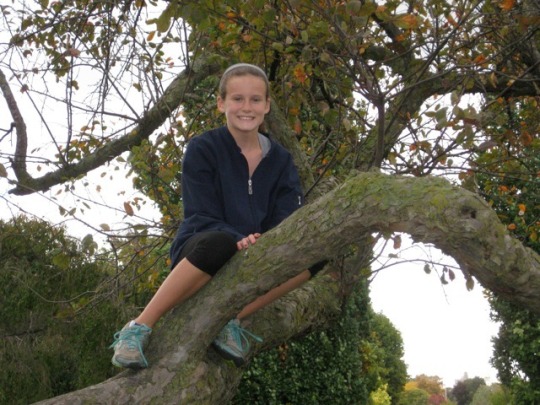
In my childhood, I was fortunate enough to attend several nature related day and overnight camping experiences. I have immersed myself in the natural world and have experienced the value of an effective nature interpreter. Now that I am of the age of previous camp councillors and teachers, I am passionate about the natural world, specifically aquatics, and am eager to be the voice for the next generation. Little 5-year-old me would be ecstatic to go down to the lake and collect stones and listen to my nature guide. I think that without this exposure and exceptional guide, I would not have the same relationship with nature that I do today.

Experiencing nature in my past and this course in the present, I have a comprehensive understanding of how I would relay my knowledge about the natural world in a digestible manner. I would focus on my passion for our freshwater great lakes and the Muskoka area that I have spent countless hours exploring. As a visual learner that recognizes there are other learning styles, a YouTube show would be an ideal source to share my knowledge with the most amount of people (Beck et al., 2018, Chapter 6). Most people have access to a digital device, if not personally then at their workplace or school. With children being exposed to technology more than any previous generation, I believe a short YouTube video weekly could be engaging and an amusing way to learn. The experience I gained through creating our podcast assignments leaves me feeling better equipped to tackle such a project.
This course has inspired me in my future aspirations. Leaving Guelph, I have the responsibility to myself and to my peers to share the knowledge we have gained in traditional study and apply it to our everchanging world. It is important to remember that regardless of what the future holds, our natural world can provide us with answers. We must support each other in our call to action and have an open mind to new possibilities and perspectives. I believe we all have been working on finding our own voice this term and I am excited to see where our values, beliefs, and interests take us.

I hope that you all can appreciate the evolution of me and my experiences outdoor through this digital scrapbook of my life through the images.
Cheers to a great term and staying curious!
References
Beck, L., Cable, T. T., & Knudson, D. M. (2018). Interpreting cultural and natural heritage: for a better world: Chapter 3 Values to individuals and society. Sagamore Venture.
Beck, L., Cable, T. T., & Knudson, D. M. (2018). Interpreting cultural and natural heritage: for a better world: Chapter 7 Serving diverse audiences. Sagamore Venture.
Beck, L., Cable, T. T., & Knudson, D. M. (2018). Interpreting cultural and natural heritage: for a better world: Chapter 6 How people learn. Sagamore Venture.
Hooykaas, A. (2024). Unit 10: Nature interpretation’s role in environmental sustainability. University of Guelph. https://courselink.uoguelph.ca/d2l/le/content/858004/viewContent/3640015/View
6 notes
·
View notes
Text
10: My Personal Ethics as a Developing Nature Interpreter
I cannot believe we are reaching the end of another year in our university endeavours. It feels like just last week, I was moving into residence, and now here I am three years later with new knowledge, experiences, and relationships. I invite you to join me one last time with this final blog, where I will share my personal ethics as a developing nature interpreter.
Whether for the better or worse, I am quite the strong-minded and sometimes stubborn (shoutout to all my fellow Taurus’) individual. Accordingly, I have lots of beliefs, morals, principles, opinions, etc., about the different aspects of life. However, when it comes to nature, I find my opinions not so ‘opinionated,’ if you will; the pure tranquillity of nature leaves no room for anything but peace.
That being said, I do believe that nature is one of the most incredible creations I have ever learned about. I won’t lie, I do really like having my phone, or being able to drive places, or having a microwave to warm up my food. But all these inventions and technologies are premeditated. I think what separates nature and what makes it so profound is that (in my belief) there is no creator behind it. What were once extremely dense packs of energy have now expanded to our universe, inhabiting tens of billions of persons and species and probably a myriad of unbeknownst aliens and other foreign pieces of matter. To put it plainly, nature is something that came from nothing. This evolution of life and nature serves many lessons for me. It inspires me to do the unimaginable. It serves as a reminder that I am just one person in a world of eight billion. It shows me that growth and change are okay. My admiration for nature is the foundation that motivates what I find to be my responsibilities as a developing nature interpreter.
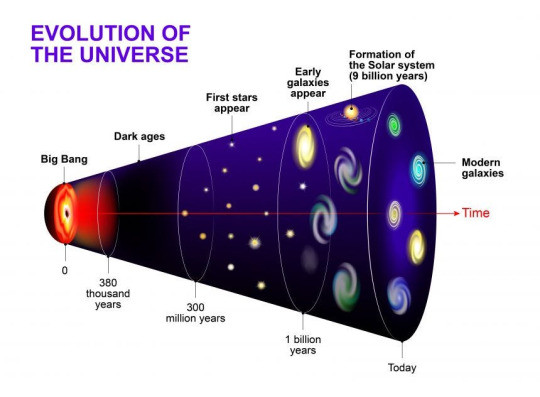
I think it goes without saying that for many of us in this class, it is our responsibility to take care of the earth; to not litter, turn off the lights, respect wildlife, conserve water, etc. However, this is the bare minimum. I hope to keep myself responsible for more than the minimum, starting with helping others unpack their invisible backpacks, as well as my own invisible backpack. That is, making one’s invisible, unearned assets visible; acknowledge the passport, clothes, visa, tools, etc., that you were born with that give you an advantage in life compared to others (Gallavan, 2005).
Furthermore, I am responsible for doing what I can to make nature interpretation accessible for anyone, regardless of what is in their backpack. At this point in time, I do not think I have the tools needed to truly make nature interpretation accessible for all. However, one day, I would like to contest the significant barriers that prevent minorities from nature interpretation by reducing economic, cultural, communication, knowledge, and fear barriers (Beck et al., 2018).
Looking at this a bit more introspectively, I plan to hold myself responsible to always be curious – to learn from any opportunity that arises. Of course, during classes, when I come across a new term or theory, I will research it until I understand it, but outside of university, including nature, this same principle will apply. This may look like asking mentors questions, googling my curiosities, or putting myself into firsthand experiences. In extension, I would like to be responsible for sharing my knowledge with others, ideally with the gift of provocation, inspiring peers to broaden their interpretive horizons (Beck et al., 2018). The outcome of my responsibilities will be more successful if I follow approaches that are well suited to me as an individual.
I think it is crucial for nature interpretation to be approached through all lenses to get the entire picture: science, art, history, etc. Take for instance, the artistic approach from Finnish groups where they use folk poetry and folk music to convey myths about the world, traditional ways of life, and links to nature (Sahi, 2012). I agree with Sahi (2012) that an interdisciplinary approach to interpreting nature that goes beyond academic, environmental, or economic perceptions is needed. For my contribution to the interdisciplinary lens of nature interpretation, I believe my personal strengths and skills would excel the most in a scientific and research approach.
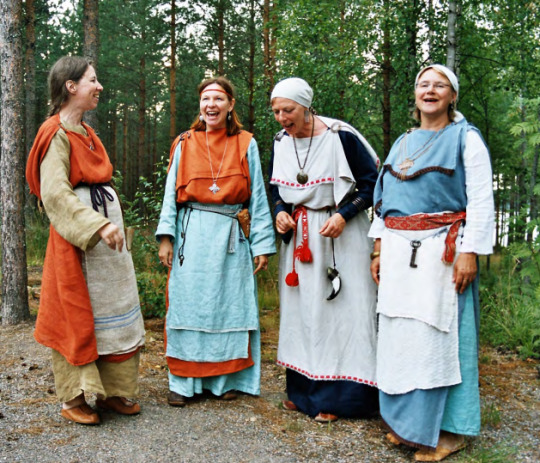
Beck et al. (2018) highlight several ways in which interpreters can meet visitors’ needs following a framework similar to Maslow’s Hierarchy of Needs with, for instance, physiological needs at the bottom and self-actualization at the top. I believe that the best level for me to help visitors meet as a nature interpreter would be either knowledge or understanding. The knowledge level refers to providing permission to access resources and data, managing meetings for discussion between interpreters and visitors, and allowing visitors to see practical applications of theories and ideas (Beck et al., 2018). One level above this comes understanding, which has interpreters provide visitors with continued studies of present interests, answers to public inquiries such as regulations, policy, and sciences, and provides experiments and activities for visitors to take home with them (Beck et al., 2018).
Revisiting what approach would be best suited for me, I find there are many similarities in the skills needed for a scientific or research approach compared to helping visitors meet their knowledge or understanding. For instance, researching gaps of knowledge and helping visitors understanding by answering public questions both require a degree of problem-solving skills.

In summary, my ethics as a developing nature interpreter are built on the belief the creation of our world is the most insane ‘invention’ yet. That I am responsible for helping others and myself continue to unpack their invisible backpacks, reduce barriers to interpretation, and to always be curious. Finally, the approach that is best suited to me will follow a research and scientific avenue to help others achieve knowledge and understanding of nature.
Thank you to everyone for sharing their thoughts throughout the semester – they have provided me new insight and perspectives on the various prompts. Further, thank you for taking the time to read my ideas, and I hope you have received some form of pleasure or benefit from doing so.
All the best,
Kiera
References
Beck, L., Cable, T. T., & Knudson, D. M. (2018). Interpreting cultural and natural heritage for a better world. Sagamore-Venture.
Gallavan, N. P. (2005). Helping teachers unpack their "invisible knapsacks". Multicultural Education, 13(1), 36. https://go-gale-com.subzero.lib.uoguelph.ca/ps/i.do?p=AONE&u=guel77241&id=GALE|A137921591&v=2.1&it=r&sid=AONE&asid=9fe2f151
Sahi, V. (2012). Spiritual values of protected areas of Europe: Using folk traditional music to communicate the sacredness of nature in Finland. Federal Agency for Nature Conservation, 129-132. https://www.silene.ong/en/documentation-centre/spiritual-values-of-protected-areas-of-europe-workshop-proceedings#Proceedings_Spiritual%20Values_PAs_Europe.pdf
2 notes
·
View notes
Text
Hi Tess!
I have thoroughly enjoyed reading your blog this week and learning about the incredible resiliency of nature. I think we often overlook (myself included) the fascinating ability for ecosystems to endure terrible tragedy, but still bounce back. How are we not in constant awe that octopus can grow back their tentacles? Or that bears hibernate for months not eating or drinking anything? Or that succulents and cacti can survive extended periods of droughts?
I was unaware of the extent in which wolves maintain ecosystems until now. To think that one species regulates the population of several other species is a testament to the importance of individual actions in a community. Furthermore, to think that one species can ruin an entire ecosystem for their own greed is abominable yet astonishing.
While nature has an incredible capacity for resilience, as you mention it can only take so much. As several of these tragedies are anthropogenic, it is our responsibility as nature interpreters to perceive when landscapes are at risk taking into account historical, scientific, and various other perspectives we have learned this semester.
As cheesy as this may be, I find nature's resilience serves as an inspiration to all–to fight against challenges no matter how hard it may be. It shows that great strength eventually will pay off with beauty and success.
If you want to watch a documentary about the resilience and strength of a female octopus and the inspiration it provides a man, I would highly recommend checking out My Octopus Teacher! It’s a great film!!
Cheers,
Kiera
The Amazing Resilience of Nature
One of the most amazing things about nature is the incredible examples of resilience seen within ecosystems. In a world that is constantly changing, nature can persist through even the harshest conditions to bounce back to its original form or make way for new life.
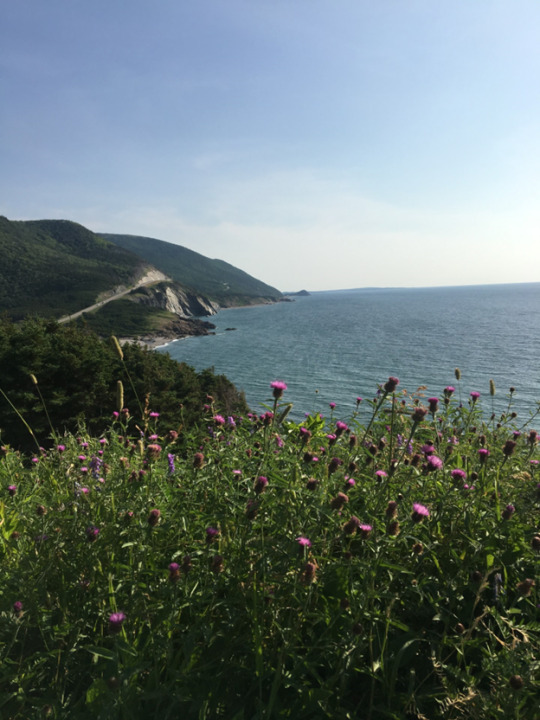
What is resilience? There are many different definitions of resilience used in ecology. Ecological resilience can be described as a natural system's ability to absorb the effects of a disturbance before the system changes states (Death, 2024). Engineering resilience is a natural system's ability to bounce back from disturbances to its previous state (Death, 2024; Thorogood et al., 2023). Overall, resilience is the ability of an ecosystem to maintain its structure or function with little change following a disturbance.
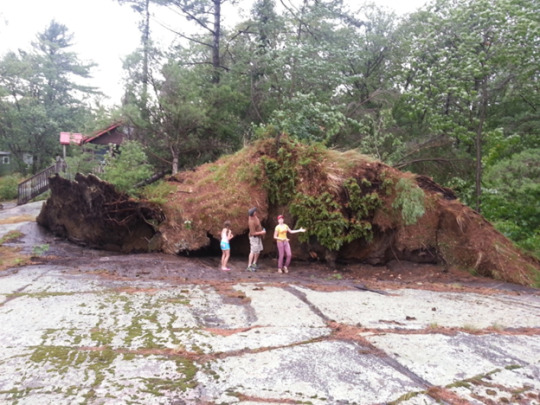
Here is a picture my mom took of tree roots that had been lifted from the ground after a downburst occurred at our cottage. After my dad cut the fallen trees, the roots and attached soil fell back over the rocks. The next year many of the trees survived and new trees and shrubs grew.
The disturbances ecosystems face can be naturally occurring events such as seasonal floods, storms, and wildfires. Humans create additional pressures such as climate change, urbanization, overexploitation of natural resources, pollution, the introduction of invasive species and more (Thorogood et al., 2023). It is the organism's and ecosystem's ability to prosper in the face of these events that makes a natural system resilient.
It may be hard to believe but wildfires can be good for an ecosystem. Forests in Canada have experienced periotic natural disturbances such as fires, insect infestations, diseases, and floods for thousands of years (Canada, 2023). These forests have adapted to these conditions to live through these events (Canada, 2023). These natural disturbances are a natural part of the life cycle of forests and even help renew life in these areas (Canada, 2023).

Here is a picture of a wildfire burning near the Pondosy Bay Wilderness Resort in B.C. (Laanela, 2018).
As a fire swipes across a forest, a door is opened to allow new life to grow. As the tree litter on the forest floor burns, nutrients that have been stored are released back into the soil. These nutrients allow soil to support the growth of new plant and tree life. Forest fires open the forest canopy supporting new life to grow as sunlight reaches the forest floor (Canada, 2023). Amazingly, some species of tree such as lodgepole and jack pine trees need forest fires to reproduce (Bushey et al.; Canada, 2023). The heat from forest fires allows the cones on these trees to open and release their seeds. Without forest fires, these tree species would not be able to reproduce (Bushey et al., 2023).
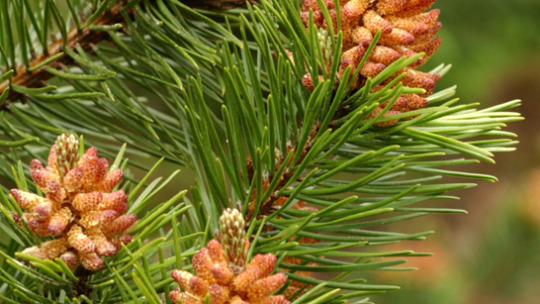
This is a picture of the cones on a lodgepole pine tree. Picture from Forestry England (n.d.).
Forest's ability to survive and create new life following wildfires is an incredible example of natural resilience. However, the increased frequency and intensity of wildfires in the wake of climate change can reduce forests' resilience to fires (Bushey et al., 2023).
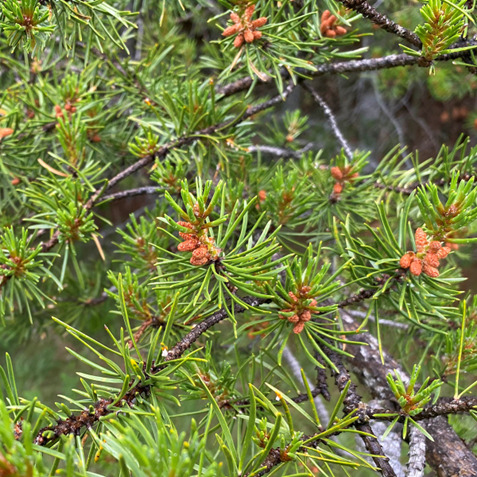
This is a picture of the cones on Jack pine trees. Picture from the Ontario Ministry of Natural Resources and Forestry (2014).
Humans can disrupt the remarkable resilience of many ecosystems through anthropogenic activities. For example, when extreme forest fires or floods occur annually there is not enough time to allow even the most resilient animals and plants to bounce back. However, when humans support nature, the true resiliency of nature can be truly inspirational.
The reintroduction of Yellow Stone wolves is a story I am sure many of you have heard. Between 1872-1926 wolves were hunted and removed from Yellowstone. Following the eradication of gray wolves, elk populations doubled, and overgrazing caused many plants and trees to die off (Peglar, 2023). The entire ecosystem was disrupted.
Rodent and bird populations declined due to habitat loss (National Geographic, 2024). Grizzle bear populations declined due to the lack of berries needed to eat before hibernation. The riverbanks eroded due to overgrazing and caused sediment to affect the water quality (Peglar, 2023; National Geographic, 2024). The whole ecosystem changed because of the loss of the gray wolves.
youtube
On January 12, 1995, eight wolves from Jasper National Park in Alberta were introduced to Yellowstone. A total of 41 wolves were introduced. Following this, the elk population was reduced and helped prevent overgrazing. The wolves even created elk populations more resilient to drought due to the thinning out of weak and sick elk (Peglar, 2023).
The wolves prevented elk from overgrazing along the river. This allowed trees to grow along the riverbank, protecting the river from erosion (Peglar, 2023). This improved water quality and supported beavers and aquatic organisms to increase in numbers (National Geographic, 2024). The reintroduction of gray wolves to Yellowstone National Park with the help of humans promoted biodiversity and higher resilience to this ecosystem.
Nature is incredibly resilient to the ever-changing conditions of the environment. With conservation efforts seen in natural areas and everyday action taken to protect the environment, people can help support the resilience of nature. By maintaining resilient ecosystems, humans and nature can thrive in a constantly changing world.
References
Bushey, D., Osmer, M., Green, H., Garneau, D., & Lesser, M. (2023). Forest resilience and regeneration dynamics following wildfire disturbance. Ecosphere, 14(9). https://doi.org/10.1002/ecs2.4655
Canada, N. R. (2023, June 22). Why forests need fires, insects and diseases. Natural Resources Canada. https://natural-resources.canada.ca/our-natural-resources/forests/insects-disturbances/why-forests-need-fires-insects-and-diseases/13081
Death, R. G. (2024). The resilience of Riverine Ecological Communities. Resilience and Riverine Landscapes, 23–39. https://doi.org/10.1016/b978-0-323-91716-2.00016-9
Enel Group. (n.d.). Ecological resilience: How ecosystems adapt to change. Enel. https://www.enel.com/company/stories/articles/2023/03/ecological-resilience
National Geographic. (n.d.). Wolves of Yellowstone. Education. https://education.nationalgeographic.org/resource/wolves-yellowstone/
Peglar, T. (2023, June 22). Yellowstone’s most controversial residents. Yellowstone National Park. https://www.yellowstonepark.com/park/conservation/yellowstone-wolves-reintroduction/
Thorogood, R., Mustonen, V., Aleixo, A., Aphalo, P. J., Asiegbu, F. O., Cabeza, M., Cairns, J., Candolin, U., Cardoso, P., Eronen, J. T., Hällfors, M., Hovatta, I., Juslén, A., Kovalchuk, A., Kulmuni, J., Kuula, L., Mäkipää, R., Ovaskainen, O., Pesonen, A.-K., … Vanhatalo, J. (2023). Understanding and applying biological resilience, from genes to ecosystems. Npj Biodiversity, 2(1). https://doi.org/10.1038/s44185-023-00022-6
Picture Credits
Forestry England. (n.d.). Lodgepole Pine. Forestry England. https://www.forestryengland.uk/article/lodgepole-pine
Laanela , M. (2018, August 15). B.C. declares state of emergency as hundreds of wildfires burn across province | CBC News. CBCnews. https://www.cbc.ca/news/canada/british-columbia/b-c-declares-state-of-emergency-as-hundreds-of-wildfires-burn-across-province-1.4785983
Ministry of Natural Resources and Forestry. (2014, July 18). Jack Pine. ontario.ca. https://www.ontario.ca/page/jack-pine
3 notes
·
View notes
Text
09: Diving Into The Genius Hunting Strategies of Antarctic Killer Whales
The most amazing thing I know about nature? This might be the most challenging blog prompt yet! There are so many incredible things in nature, to pick just one is a tough choice. The past couple days I have been a bit stumped, however I decided to go with something I learned in detail just recently, the creative and adaptive hunting strategies of Antarctic killer whales.
I recently watched an episode of Animals Up Close with Bertie Gregory, during which I learned about the incredibly sophisticated strategies killer whales use to capture their most common prey, seals, specifically Weddell seals. The following information is from West et al. (2023).
Weddell seals often rest on sheets of ice called sea ice, which is relatively thin ice, allowing the whales to use a strategy called wave washing. Before they can use this strategy, they must find the seals. To do so, they use their skills of spy hopping, where they poke their heads above the water, looking for seals. If they find one on sea ice, they will attempt to wash it off the ice by creating a giant wave. Groups of whales line up side by side, swim under the sheet of ice, and rotate to their sides, creating a wave that crashes onto the sheet of ice in an attempt to push the seal off.

Another strategy killer whales use is often referred to as a shockwave. They use this strategy when a seal is on a large sheet of ice, and their wave washing would not generate a large enough wave to reach the seal. The killer whales will line up side by side, swim under the sheet of ice and create an underwater wave which breaks up the sheet of ice into smaller pieces. Then they will use another strategy where they push the smaller sheet of ice into open water where they have more room to wave wash the seal off.

They use a few more strategies, such as biting chunks off a large sheet of ice to make it smaller. When they are in close combat, they will blow bubbles in the face of seals to disorient them. They also use echolocation to find the sheets of ice by creating noises that bounce off objects in the water to get a sense of their environment, even without actually seeing it.
Feel free to check out this video, it's about a minute long and shows the whales spy hopping, shock waving, pushing the sheet to open water, and wave washing:
youtube
Unfortunately, killer whales are highly endangered due to climate change, one of the several areas of concern for the future of nature interpretation (Beck et al., 2018). The warming weather has put sea ice in decline, so seals are resting on land. This leaves the whales unable to capture a primary food source, Weddell seals.
I hope you found learning these strategies as fascinating as I did! I highly recommend checking out the Antarctic Killer Waves episode on the series Animals Up Close with Bertie Gregory!
Thanks for tuning in,
Kiera
References
Beck, L., Cable, T. T., & Knudson, D. M. (2018). Interpreting cultural and natural heritage for a better world. Sagamore-Venture.
Quantum. (2022, September 20). How killer whales attack a seal on a large iceberg [Video]. YouTube. https://www.youtube.com/watch?v=NURfU7u0G7o
West, W., Close, M., Millsap, S., McClean, M., & Brickell, J (Directors). (2023). Antarctic killer waves [Television series episode]. In M. Anwar (Producer), Animals Up Close with Bertie Gregory.
1 note
·
View note
Text
Hey!
I really enjoyed reading your post for this week! Your words exemplify the beauty of nature, the beauty of music, and the even more extraordinary beauty of nature and music together. I totally agree - music is everywhere, from rain, to thunder, to fire crackling, to animals communicating and a plethora more ‘musicians’ if you will. Reading your post made me reflect on my own relationship with nature as music; one thought that came to mind is how I rarely go for walks with earbuds in (when away from the city). I see many other individuals walking in serene landscapes with headphones on, and I imagine that it takes away from the entire nature experience. Bear in mind, I am all for headphones in the city; cars driving by, horns honking, passing conversations, and construction tools at work are not my favourite melodies. I think, as you touch on, nature is essentially music in its most basic form, so while I might not have earbuds in, I am still listening to music.
When I was writing my original blog post, I struggled to answer the prompt, “Where is nature in music?” After reading your response to the question, I feel silly to have contemplated my ideas for so long; nature is convincingly the backbone of modern music. I find it interesting to think about the evolution of music, including the timeline, the various intricacies at play, and how our relationship with music has evolved as well.
Cheers,
Kiera
Music and Nature
Everywhere. Music is in nature everywhere. Just a few days ago Guelph had a thunderstorm and I couldn’t help but relish in the sound of raindrops against glass windows and the thunder rolling. It got me thinking back to the many times we’ve heard nature speak and sing. It reminded me of early summer mornings when I’d wake up to the sound of birds chirping, only to then close my window so I could sleep. Or the time I heard colonies of sea lions in California. One of nature’s melodies that I enjoy the most is the crashing sound of waves reaching shore and the crackling of a fire. That is to say, whether it's the sounds mother nature makes through the elements or through animals, music is everywhere in nature. This can also be proven to be true vis versa.
As Micheal Spitzer once wrote, music is our umbilical cord to mother nature (Bastian, 2021). What he means by that is, the music we listen to today is an evolution of the sounds we have put together from animals and other aspects of nature. Essentially, when you are listening to music, you are taking a journey through time. In a podcast linked below, he discusses the beginning of time when animals were the only creatures on the Earth that sang like whales and birds, whether it was to communicate with others or to attract mates (Bastian, 2021). Somewhere down the line our ancestors assimilated those vocalizations (Bastian, 2021). He discusses different theories on why homosapiens are captivated by the sounds of nature and how it has provided evolutionary advantages (Bastian, 2021). Eventually, they used nature’s sounds and created tools like bone flutes to mimic and create melodies based on the rhythms created by insects like crickets (Bastian, 2021). Thus, if we were to think back to the original point of this discussion, where is nature in music, Spitzer would argue nature is the backbone of music.
https://www.kcrw.com/culture/shows/life-examined/evolution-music/michael-spitzer-musical-human
(In the spirit of listening and creating podcasts, I’ve linked the podcast above where the author & professor Micheal Spitzer discusses how nature has impacted the music we listen to today. I would highly recommend that you check it out, it's very fascinating!)
On that note, much of the music I listen to is instrumental, especially violin music. Having played two instruments growing up, I enjoy listening to different melodies. Even when I listen to lyrical music, I often find myself humming the tune while struggling to recall the lyrics. One of my favorite songs is called Raindrops and it is composed by a violinist named Raaginder. If you check out his discography, most of his songs are inspired by nature hence the name of the song. This is one of his earliest works from 9 years ago and it has the magical ability to transport me to the memory of my grandmother and I sitting on the terrace of her home back in India, watching as the soft winds blow across the fields during monsoon. Listening to this piece reminds of the soothing rustle of the leaves and the smell of the wet soil. This personal connection with the song is a beautiful testament to the power of music, to be able to forge deep emotional connections with nature and our own personal histories.
youtube
Bastian, J. (2021, June 12). Why music is “our umbilical cord to mother nature”: Life examined. KCRW. https://www.kcrw.com/culture/shows/life-examined/evolution-music/michael-spitzer-musical-human
4 notes
·
View notes
Text
07: Music Beyond Just Humans
Hey everyone,
This week, I will be diving into the connections of music and nature!
Following this definition of music, “Music has been defined as patterns of sound varying in pitch and time produced for emotional, social, cultural, and cognitive purposes” (Gray et al., 2001), music can be found in nature in various instances. The first instance that comes to mind, and probably for many others, is the sounds that animals make. Particularly birds for instance, make noises that follow rhythmic variations to communicate with others – some birds even use their feathers or manipulate objects as ‘instruments’ (Gray et al., 2001). For example, a male palm cockatoo will break a twig, shape it into a drumstick, and drum it onto a hollow log as a courtship ritual (Gray et al., 2001). I like to think there are other forms of music in nature, even though nature might not consciously orchestrate them. For instance, the sound of leaves, the roar of thunder, or the crashing of waves all produce different patterns and pitches of sounds similar to that found in modern music.

Finding nature in music is not as simple as finding music in nature – we do not often hear artists playing nature in music, such as birdsongs or leaves rustling. That said, if you have a song you like that literally has nature in music, feel free to share! I would love to listen to it! I think a lot of us will be able to find nature in music in a more figurative sense. What I mean by this is that perhaps certain songs remind you of a time when you were in the presence of nature; songs you listen to when you are at a cottage, camping, going on walks, etc. In this way, nature is in music, as certain songs make you think of nature.
Personally, there is no one song that immediately brings me back to a natural landscape. Most of the songs I listen to do not invoke feelings of when I was in a natural landscape. Some artists I like are Clairo, Arctic Monkeys, Billie Eilish, Hozier and The Neighbourhood – others who listen to these artists may also understand how these songs do not immediately bring you to a natural landscape. However, if I were to name a song that brings me back to nature, one song that comes to mind is “Woodland” by The Paper Kites. This song makes me think of life as an endless opportunity for growth and learning while reaching for your wildest dreams. I think the lyrics in the chorus encapsulate these ideas well: “Won’t lay down our heads ’til the day is won. Won’t stop running ’til we reach the sun.” The Paper Kites use many references to the natural world to convey emotion to the audience and uses a lighthearted folk tune that I find provides a similar serenity found in nature. Give it a listen here if you wish:
youtube
Thanks for reading,
Kiera
References
Gray, P. M., Krause, B., Atema, J., Payne, R., Krumhansl, C., & Baptista, L. (2001). The Music of Nature and the Nature of Music. Science, 291(5501), 52. https://link-gale-com.subzero.lib.uoguelph.ca/apps/doc/A69270354/AONE?u=guel77241&sid=bookmark-AONE&xid=fb9366a8
Thepaperkitesband. (2022, February 7). Woodland. [Video]. YouTube. https://www.youtube.com/watch?v=82xEG2mCbCo
1 note
·
View note
Text
Hey!
I too investigated similar topics about the challenges of accuracy and authenticity in my original blog post. I think that you describe these challenges well and highlight important aspects that people who follow a career in nature interpretation must take into consideration when orchestrating and sharing their knowledge. For instance, ensuring that the information is based on truth and conveying to the audience that their knowledge is supported with unquestionable doubt.
I also think you touch on an important aspect that the quote is alluding to in that we learn from our mistakes and other people's mistakes. I for one, find experiences (and the mistakes that come with it) to be of the most insightful and educating forms of learning. Not only on an individual basis, but also on a scale including the whole world from conflicts of war to discrimination against others and more.
The question you pose at the end is quite abstract and has me pondering all sorts of ideas. For one, if the integrity of history fell apart, does that mean we would be stuck in our past having never found the knowledge from ‘ancient things.’ Or if we have made it this far and all of a sudden the integrity of history fell apart, would we regress to the same perspectives humans had in the 17000s, 1800s, etc? I think whatever the answer may be, it is not a favorable one and speaks all the more volume to the importance of interpreting history and interpreting nature through history.
Cheers,
Kiera
The integrity of history
“There is no peculiar merit in ancient things, but there is merit in integrity, and integrity entails the keeping together of the parts of any whole, and if these parts are scattered throughout time, then the maintenance of integrity entails a knowledge, a memory, of ancient things. …. To think, feel or act as though the past is done with, is equivalent to believing that a railway station through which our train has just passed, only existed for as long as our train was in it” (Edward Hyams, Chapter 7, The Gifts of Interpretation).
This quote is challenging to analyze, but this leads to various ways to interpret it. The first half of the quote discusses how there is importance in persevering integrity, and when trying to maintain integrity, we must use our knowledge, memory and ancient things to do so. I believe that this means that history holds integrity and this is why history is studied and remembered through time. When interpreting history there are two main challenges that can occur.
One challenge is accuracy. Any historical interpretation must be presented with respect and with professional integrity to ensure that the listeners are presented with the truth (Beck et al., 2018). This is easier said than done, as there are a lot of factors that can influence the truth. For example, different local cultures may have contradicting interpretations of past events. Your geography and location can also influence how you interpret a historical event. Another challenge with historical interpretation is that it is dynamic and always changing. All of these challenges influence how accurately we interpret history, which in return, can influence the integrity of the history itself (Beck et al., 2018).
Another challenge to historical interpretation is authenticity. Authenticity is extremely important to interpreters as it provides a sense of realism. Gilmore and Pine (2007) did a study that found that consumers want the real thing. Whether this is a painting in a museum, or a perceived artifact. Having the real thing makes a difference in how we interpret history (Beck et al., 2018). Consumers might lose integrity in history if there is no authenticity. Therefore, authenticity creates a challenge with how one may interpret history.
The second part of this quote discusses how history debunks the belief that the past doesn't live on, and in thinking this, you believe that a train station only existed for the time the train was at it. This part of the quote resonates with me as I believe that it is trying to say we must learn from the past. I believe that the best type of learning comes from our past mistakes, and the mistakes of others. Part of the reason history is studied is to not repeat the mistakes of the past. I think that history interpretation ties in well with this part of the quote as it involves the retelling of stories to an audience, provoking the thoughts of others while trying to be inspiring and meaningful (Beck et al., 2018). That is how history is best shared, through meaningful stories that grab the attention of others. I think that relates well to nature interpretation as a lot of the same principles apply. To interpret well, you must be relatable, thought provoking and meaningful. They also intertwine as “every natural site contains a history, and every historical site has a natural resource” (Beck et al., 2018).
I want to end this blog on an abstract question. What do you think would happen if the integrity of history fell apart?
Beck, L., Cable, T. T., & Knudson, D. M. (2018). Interpreting cultural and natural heritage: For A Better World. SAGAMORE Publishing.
4 notes
·
View notes
Text
06: The Railway ‘Walked’ So The Train Could ‘Run.’
For this week, we are to unpack the quote by Edward Hyams – I found I had to read it several times to grasp the poetic wording and metaphor! In doing so, I also had to rethink its meaning each time I reread it which provided a deeper understanding. Here is how I initially unpacked the quote:
The quote begins by speaking to the idea that old items generally don’t have much worth (aside from the cool vintage finds at Value Village). Following is a seemingly different topic, integrity. Edward says that to have integrity (honesty, moral principle), one must keep together the smaller factors that come together to create the larger outcome. He then brings it back to the idea of “ancient things” by describing how the parts he is referring to are actually history or “scattered through time.” With this in mind, ancient things are indeed of importance, as the knowledge they provide upholds integrity.
In summary: History may seem unimportant, yet it provides knowledge and memory of the parts of our past that have come together to make up the whole of our present.
So, what’s this got to do with nature interpretation?
Well, every single inch of land on our Earth has a story that accompanies it and in knowing its past we are more equipped to interpret its present. For instance, the University of Guelph was once a 500-acre farm, focused purely on agriculture studies; knowing this I can see why the term “aggies” is so suited and niche to the University of Guelph (UofG, 2024). Fortunately, this information was documented and is easily accessible, along with much more information on the history of UofG. However, this is not always the case – there is often controversy on the accuracy and authenticity of history (Beck et al., 2018). This is an issue to interpreting nature in various ways, for instance, even if experts find history to be authentic, interpreters have found that visitors do not necessarily believe in the authenticity (Beck et al., 2018). If visitors do not find the interpreters' knowledge to be credible, they will be less likely to participate and enjoy the nature interpretation (Beck et al., 2018).
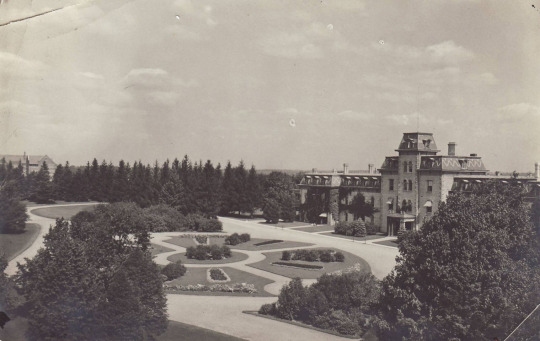
Reflecting on the implications of Edward’s words, I think how so many pieces of land, particularly land where humans do not reside and nature is the true focus, have limited documented history. I would love to learn the stories and evolution of the forestry behind my house, however this knowledge on ancient things was not documented, taking its integrity away too. This inspires myself to take pictures of nature and write about what I see, as one day when the present becomes history, I will be able to refer to the knowledge and experiences I have gained and share that with others.
To conclude for this week, I think an important takeaway is that the present would not be how it is without the past, and thus we should acknowledge both. Or, in other words, the railway ‘walked,’ so the train could ‘run.’
Thanks for tuning in,
Kiera
References
Beck, L., Cable, T. T., & Knudson, D. M. (2018). Interpreting cultural and natural heritage for a better world. Sagamore-Venture.
University of Guelph [UofG]. (2024). University of Guelph History. https://www.uoguelph.ca/about/history/
2 notes
·
View notes
Text
Hey Jody,
Thanks for taking the opportunity to share your love for the water in this week's open prompt! I found your post quite intriguing as my feelings towards the water are, unfortunately, quite the opposite. When I was a young child, I was never a fan of swimming, boats, or anything water related. Now, as a young adult, I enjoy water activities, however the idea of large bodies of water still spooks me. I think what frightens me the most about the ocean is the unknown; the meters upon meters of deep water and eccentric creatures that swim below us. Also, the power these massive bodies of water hold; keeping our ancestors alive until they made it to land eventually evolving to homo sapiens, just for the water to be able to send a massive tsunami and destroy what we have created in a matter of seconds.
Nonetheless, reading your blog post has reminded me of the spectacular beauty and serenity water provides. I enjoyed learning about what you feel when you are deep diving and swimming, from the peaceful balance of noise, to the ‘cold hug,’ to searching for movement, and to simply floating in the current. It has inspired me to seek these feelings next time I am in water rather than letting my mind go straight to my initial fears. I hope you and your dad have a wonderful time in BC, enjoying each other's company, the water, and the fishing!
Cheers,
Kiera
Blog 5: The Flow of Water
Hey everyone! Welcome back to my blog! I hope you’ve been enjoying the posts and I have been reading all the replies/reblogs and I am glad to see others taking interest in the same topics as me! Anyway, we’ll get into this new blog post, and I’ll be writing about what water really means to me. Enjoy the read and the pics!
Ever since I can remember I have had a strong connection and always feel drawn/pulled towards the water. Anytime I am near any body of water no matter how big or small, it could be a small puddle on the ground or on a table or it could be an ocean or lake, I will stare at it for a little while to see if I can see anything moving within it. I am unsure why but all life in the water intrigues me. Ever since I was young my dad would take me fishing when we could and I know for a fact that this is one reason I have the love for the water that I do, but even before that I was eager to go to the water and look at everything in it.
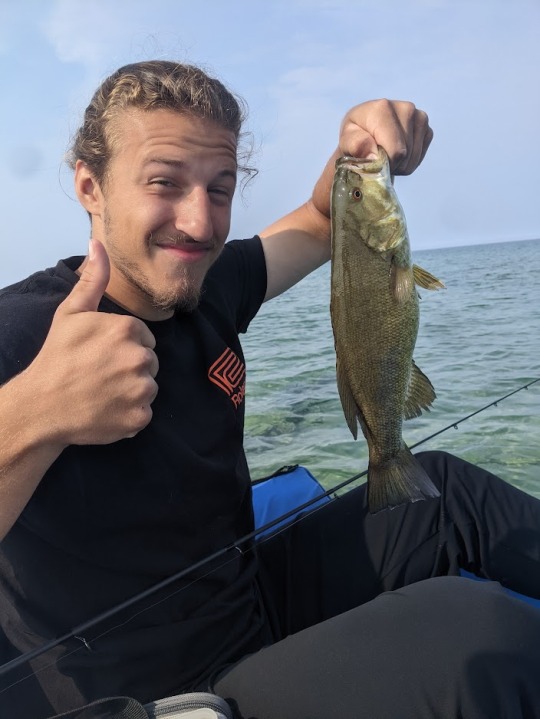
This is a picture of a time my friend and I went fishing just out front of my cottage in a paddle boat, and we caught 4 smallmouth bass (2-3 pound like the one in the picture, 1 1.5 pound, and 1 1 pound).
Fishing is a very large hobby for me to this day, and I will find any excuse I can to go fishing when I’m at my cottage or somewhere I know I can fish. I mentioned in an earlier post that my dad and I are going on a fishing trip in BC and it is supposed to be a once in a lifetime experience, so I am very excited for that. Due to how much I had gone fishing it piqued my interest more and more on how the fish survived and lived in the water. I was always told to be careful when handling a fish because their gills are very sensitive, but I was never told why. This interested me so much I am now in my 4th year of Marine and Freshwater biology, and while this answered the original question of why fish gills are so sensitive it has opened up a multitude of other more in depth questions and just makes my love for these creatures even more deep.
I’ve never really been one who enjoys reading, but as a young child my favourite book of all time that I would take everywhere with me was titled, “Oceans”. This book helped with my ever growing interest in all things aquatic, and has helped with my ‘random useless facts’. This book never left my side for roughly the years between 7 years old to 11 years old. This is what I would read when I was bored or during the “silent reading” time in school.
This video shows how rough the waters at Indian head cove, Tobermory can get, but as dangerous as this may be there is also beauty in the waves destruction.
Swimming is one of my favourite forms of exercise. I find that whenever I go swimming with friends either in a lake or in a pool I am always able to continue swimming without fatigue. While swimming I do not feel as if I get tired and always have strength. I also enjoy freediving (although I am still trying to get better). I find diving to deeper depths extremely peaceful because it’s so solitary when you are 20-25 feet below the surface. The noise isn’t overwhelmingly loud but it’s also not silent. The water pressure around you feels like a cold hug, and all you see is a beautiful deep blue (at least in Georgian bay/Lake Huron), and when you let your body swish in the current (while holding onto something so you don’t drift away too far) it is such a serene feeling.

This is a picture of Georgian bay on a very calm day and it shows the beautiful deep blue colour.
Unfortunately, I don’t have any pictures of being underwater, but I hope you enjoyed the other pics. I hope you all enjoyed the post this week, and I look forward to your replies! I’ll see you next week for the next post!
4 notes
·
View notes
Text
05: Tips and Tricks on Tree Identification
This week, we have learned that when interpreting nature through a scientific lens, it is not always necessary to name species, as sometimes it is not what an audience wants (Hooykaas, 2024). While I completely agree with this, one instance where my curiosity has been fulfilled by naming species is through tree identification. With the opportunity of an open prompt this week, I have decided to share my knowledge on how to identify some common tree species based on the leaves. If you have read some of my other posts, you may know I spent the summer of 2023 as a tree stewardess and forest researcher, where I learned the information below.
Sugar Maple
Some of us may have a general understanding of what the maple tree species look like because of the Canadian flag: the leaf on the flag is a sugar maple! Sugar maple leaves have five medium sized lobes, with relatively smooth edges connecting each point. The sap from this tree makes maple syrup!

Silver Maple
The silver maple also generally has five lobes (sometimes seven), however they are separated with deep and sharp spaces. The back of a silver maple leaf will have a whitish hue.

Norway Maple
As with the silver maple, the Norway maple also has five to seven lobes, however each lobe is much wider. Another way to identify the Norway maple is the milky white liquid that excretes from the stem of a leaf.

English Oak
The English oak has approximately five lobes (sometimes more) on each half of the leaf. The lobes are rounded and generally start smaller near the stem of the leaf and grow larger.

Colorado Blue Spruce
The easiest way to identify a Colorado blue spruce is by looking for a tree with a bluish/grayish tint to it. The needles on this tree are coated with a bluish powder – if you think you have found a Colorado blue spruce, try picking a needle and rubbing it between your fingers – the ‘powder’ should come off, removing the blue colour.

White Pine
The needles on a white pine will cluster together in groups of five straight and flexible bunches. This tree is relatively soft to the touch in comparison to other pine trees.

I hope you have learned a little bit about how to identify some of the common tree species in Ontario. I invite you to try and identify some of the tree species described the next time you go outside – you will most likely only be able to identify the Colorado blue spruce or the white pine at this time, as the other trees will have lost their leaves.
Please feel free to share some of your favourite tree species and why; the way they smell, the shape of the leaves, the way they change colours in the fall, etc! Mine has got to be the ‘little leaf Linden’ for no particular reason (my last name totally isn't Linden).
Thanks for tuning in,
Kiera Linden
References
Hooykaas, A. (2024). Unit 05: Nature Interpretation through Science [Course notes]. University of Guelph Courselink.
3 notes
·
View notes
Text
Hi Heather,
I have really enjoyed your post and reading your perspective on this week's prompt! I think your giftedness in painting and experiences with your grandmother have created a beautiful outlook on this topic. I also thank you for sharing that memory with your grandmother when you were painting beside a river; it really demonstrates that we can all interpret nature through art in our own ways, and there is never a right or wrong answer. Your memories with your grandmother remind me of my grandpa, who was also a talented painter. While I never got to meet him, his paintings of the outdoors are around my family’s house. I like to think that I can at least somewhat understand how he saw nature through his paintings even though I have never spoken to him; they are all set in autumn, with a river or lake, and sometimes other additions such as a cabin or mountains in the background.

This is a picture of one of my grandpa’s art pieces.
I also think you touch on some important points on accessibility to nature interpretation. That is, not all of us can travel to see beautiful scenery, however, paintings such as the ones by the Group of Seven and photographs taken and shared by people can be more readily viewed by others. Moreover, we as individuals taking photographs of nature that we appreciate allows us to reflect back on the images and relive that initial feeling of seeing beauty.
Cheers,
Kiera
ps: that painting for your roommate is incredible!
If you look at the word NATURE, you'll find A R T in it :)
Hi folks,
This weeks lecture notes and readings was definitely my favourite so far. For as long as I can remember I have been drawn to the arts, participating in painting, drawing and music (on and off) my whole life. When I got older, I started to appreciate the beauty of nature and connected it to my painting. My grandmother was a great inspiration throughout this journey, she had a great eye for art and would always take me up on my offer to paint. This was also the first time I noticed how two people can look at the same landscape and see completely different things. I remember sitting beside a river with my grandmother, we were painting with watercolour. At one point I looked away from my canvas to see hers and was, honestly, a little confused. When I looked at the river, I had focused my painting on the waterfall, and the waters descent over the rocks. But hers was different, hers was of the entire landscape, the river was only a small part of it. We were looking at the same scene but were interpreting it in different ways. Neither was wrong, neither was right either, it was simply how we saw it.
When looking at the question posed to us this week, I honestly had no idea was the first part meant, and there's a good chance I might still be confused. "Who are you to interpret nature through art?". It seems to me like an intimidating question, and trying to come up with a definitive answer, that I could simply state, escaped me. I interpret nature through art because I am human and because I can. I interpret nature through art because I resonate with the idea that "people perceive natural resources and artistic values emotionally as well as intellectually" (Hooykaas, 2023). When looking at a natural setting, I feel the urge to sit for a moment and appreciate the beauty. I also, usually, want to take out my phone and capture the scene, so I can continue to appreciate it.
When it comes to interpreting "the gift of beauty" I have always gravitated to painting. I enjoy painting scenes that I have taken pictures of, moving them from screen to canvas, and reminiscing in the memory. Using art as a tool to help convey a message allows us to create richer experiences for those we are sharing it with (Wheeler, 2016). For example, when I go to visit my grandmother I tell her about my life and what I've been up to, and on many occasions I will have painted a recent memory from where I've been, and I can tell her "I was up at the cottage and there was the most beautiful sunset", but the addition of me showing her the scene as I remember it makes the connection so much more meaningful.
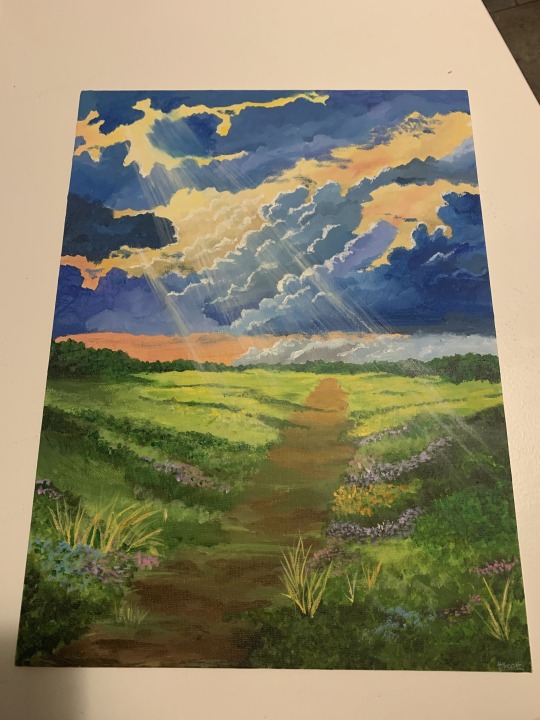
In chapter 10 of our textbook we were given a debrief of the main types of art; interpretive theater, storytelling and poetry, music, dance and the visual arts (Beck et al., 2018). Not everyone will react the same way to each of these mediums, but they are all effective tools in interpreting nature to the general public. I find music, visual arts and poetry the most effective, but someone else might disagree. It's all in the eye of the beholder, which is why it’s so important for us as interpreters to ensure we offer as many as possible. I've done activities with students where we go out on a walk and at some point stop and everyone has to draw something they see around them. This makes them stop and think about where they are and what they’re seeing. Most of the time, they will pick something that stands out to them or something they think is cool or beautiful. Just by doing a simple activity like that, a connection is bridged between the student and their environment.
My family has several The Group of Seven paintings in our home, my parents always loved the appreciation of art. I love the paintings because they are all done very simply, the style is almost gentle and it is calming to look at. The painting are also very important, not everyone has the ability to venture out into the natural world to appreciate those scenes first hand. However, galleries are accessible to almost everyone and they are everywhere. Someone can look at a mountain first hand, capture the moment on paper, interpreting it how they see it, and then share it with those who can't go themselves. In this way, we are in our simplest human form, seeing something beautiful, appreciating it, and acting on the urge to share it with others.
-All for now!
Beck, L., Cable, T. T., & Knudson, D. M. (2018). Interpreting cultural and natural heritage: For A Better World. SAGAMORE Publishing.
Hooykaas, A. (2023). Unit 04: Nature Interpretation through Art and Planning for "All" Scenarios [Lecture notes]. ENVS3000 Nature Interpretation. University of Guelph.
Wheeler, E. (2016). The craft of engagement. Legacy, 27(6), 29–31.
3 notes
·
View notes
Text
Unit 04: Interpreting Nature Through Art - A Living Museum?
When first reading “Who are you to interpret nature through art?” I was initially hesitant in my answer. While I consider myself a very creative person, I am by no means artistic in the traditional sense – my music, dance, acting, and visual art skills are subpar. So, I definitely do not have expert background knowledge or experience in this topic, but that does not mean I am unable to interpret nature through art. Furthermore, one asset that I believe would enhance my ability to interpret nature through art is my current enrolment as a Bachelor of Arts and Science (BAS) student.
In this program, students are required to take “ASCI” courses that help develop critical thinking and inquiry skills. These courses often have topics based on a mixture of science and art; for example, communication (English) of climate change (environmental science). In addition, the courses I take are evenly divided between the arts and sciences. Accordingly, this has provided me with an interdisciplinary perspective that would be particularly valuable to interpreting nature through art.
While a ‘student’ during my university courses, I am still a devoted learner in the other aspects of my life. When asked who am I to interpret nature through art, I think, I am someone who loves to learn new things every day. As outlined by Rita Cantu, another dimension to interpretation is art, “If the songs are not sung and the stories are not told, the land will die. An interpretive corollary can affirm: If the songs are not sung and the stories are not told, danced, painted, or acted, our spirits will die as well” (Beck et al., 2018). As many other students may relate to, my mind is constantly in an ordered, logical thinking state to aid my academic success. I rarely shift gears into more abstract thinking that involves metaphors, symbolism, and other artistic thinking unless necessary for completing assignments. To interpret nature through art would bring this side of thinking to the surface and allow for greater learning and perspective; there would be fewer straight lines and more twists and curves (Beck et al., 2018).

I think that having ‘the gift of beauty’ can look different depending on who you ask, as we each classify what is beautiful uniquely. That being said, I believe the gift of beauty comes more easily to those with greater imagination. We have all probably experienced this within ourselves; as imaginative youth, we may have been infatuated by the ‘pictures’ in the clouds, the patterns on zebras and tigers, building majestic sandcastles, or the birds singing. However, not so beautifully, as highlighted by Kurt Hahn in The Social Declines of Modern Youth, children these days have a decline in imagination due to the restlessness caused by the modern world (Hooykaas, 2024). So, perhaps the gift of beauty is also taking a step away from the distractions of our modern world and reconnecting with the beauty of our natural world.
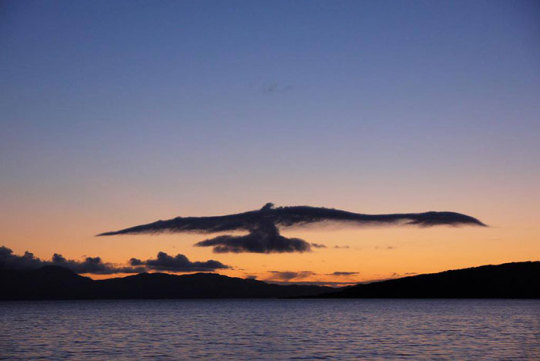
Thanks for tunning in this week!
Kiera Linden
References
Beck, L., Cable, T. T., & Knudson, D. M. (2018). Interpreting cultural and natural heritage for a better world. Sagamore-Venture.
Hooykaas, A. (2024). Unit 04: Nature Interpretation through Art and Planning for “All” Scenarios. [Lecture notes]. Courselink.
4 notes
·
View notes
Text
Hi Michela,
Thank you for the insightful post regarding the four different types of privilege and their role in nature interpretation. I believe you speak to the importance of recognizing that life circumstances play a huge role in one’s ability to advocate and interpret the environment. I have seen instances of individuals having time and economic privilege from working as a forest researcher and tree steward over the past summer.
We offered nature walks, where we spoke to community members about the different types of trees, and their importance to an ecosystem. Unfortunately, these walks were only offered during the week day, so only those with time and economic privileges were able to come and learn - the majority of the time the people who joined us were retired white people. Those who had to work during the day or had other responsibilities, were unable to make it to the walks. Your post sparks creativity in my mind regarding how to make nature walks and nature education more accessible to those who may not have such privilege. Perhaps offering nature walks at night, or creating a podcast with the information so people can enjoy at their leisure would make such a service more accessible to those without these privileges.
As you mention, a vital aspect to creating fair and accessible interpretation of nature, is first recognizing the role privilege plays. I think that blog posts and conversations like these are a great way to acknowledge different opportunities and advantages.
Looking forward to your future posts,
Kiera
Privilege
Privilege refers to the advantages and opportunities given to only a particular individual or group of individuals. I think that there are various ways in which privilege can play a role in nature interpretation. This is because there are various different types of privilege.
The key role that privilege can play in nature interpretation is impacting an individual’s access to and participation in natural spaces. This can be due to educational privilege, cultural privilege, economic privilege, or even time privilege, among others.
Those with educational privilege may approach nature interpretation with a more informed foundation, resulting in a better, well-informed understanding. Their more knowledgeable understanding can make it easier for them to engage in interpretation in a meaningful way, making the experience more rewarding all around.

Similarly, cultural privilege could influence people's views and relationships to the cultural aspects of nature interpretation by shaping their perceptions and connections to their heritage or culture. However, this factor may also introduce potential biases and assumptions rooted in the individual's specific cultural understanding, providing the ‘advantage’ to those with different cultural ties to the specific area.

Those with economic privilege may have greater access to parks, reserves, or other natural locations. Additionally, this privilege could lead to greater educational privilege in turn due to the greater opportunities that those of higher economic privilege can often attain.

Lastly, time privilege refers to the advantage that individuals with more free time or flexible schedules have over those who have less time. This could be due to various commitments such as a job, caregiving responsibilities, or any other time-consuming obligations. In nature interpretation, time privilege can influence how individuals participate in and benefit from interpretive programs and activities.

Privilege can also influence an individual's level of environmental awareness and advocacy. Individuals who have the luxury of time and funds may become more involved in conservation activities, environmental advocacy, and/or sustainability practices. In contrast, individuals facing economic hardships may be distracted by urgent worries, making it difficult to prioritize environmental issues. This could also be apparent in regards to education. Those with greater education would likely be more inclined to advocate for environmental stewardship as they may better grasp the science behind it.
However, it should be addressed that this post uses a lot of assumptions which may not be the case in every situation. Where something may seem like an obvious privilege to one person, it may be the opposite for another. I think that there are so many ways in which we can interpret everything and, because of that, it can be really hard to give definitive answers to such complex questions.
In summary, privilege, whether educational, cultural, economic, or time-related, has significant effects on an individual's experiences and interactions with nature interpretation. While having any of these privileges is not something to be embarrassed about or regret, recognizing them and their dynamics in nature interpretation is critical to producing inclusive and accessible programs that appeal to a varying audience. This helps to establish a more fair and lasting relationship between individuals and the natural world.
4 notes
·
View notes
Text
03: Plants, Ponds, Petals, Pebbles, and Privilege
This week, I will be discussing the role privilege plays in nature interpretation. While at first glance, one may (naively) think, ‘Well, we can all interpret nature. Just step outside!’ there is more than meets the eye. My understanding of privilege is that it is a special advantage that makes opportunities more easily available for specific persons; more often than not, individuals are born with a certain level of privilege. Various details of an individual play into privilege; some of the more prevailing aspects (but not limited to) include culture, gender identity, race, and socioeconomic status.
For society to bridge the gap between more privileged and less privileged, at an absolute minimum, we as individuals should recognize the attributes and opportunities we have access to. In other words, as Peggy McIntosh may say, we should unpack our invisible backpacks. That is, we carry a weightless and ‘invisible’ backpack that gives access to opportunities; the irony being the backpack is by no means invisible (Hooykaas, 2024). Reflecting on my ‘invisible’ backpack, I am a white, middle-class, English-speaking university student with Canadian citizenship. As a result of my backpack, I have had opportunities that are not remotely equally available to everyone.
I believe a pertinent privilege, and thus also a barrier, that plays into nature interpretation stems from one’s socioeconomic status. Access to education, technology, and transportation are all aspects that would allow for preferable nature interpretation. However, these all require a level of income that can be spent on recreational purposes, which we all do not have. As a result, people who have lower socioeconomic status will be less likely to participate; this is often called the Marginality Theory (Beck et al., 2018). As some of us consider a career in nature interpretation, moreover as our generation will eventually be the majority of working age, we must do what we can to reduce such economic barriers. For example, in the case of providing nature interpretation, we should consider providing transportation, or better yet, bringing nature interpretation to people where they can learn about their local environment (Beck et al., 2018).
One’s physical status is another significant privilege, particularly to nature interpretation. Do you have able legs that can walk you through the intricate and sometimes harsh environments on our planet? Do you have able eyes that allow you to see the detailed aesthetics of nature while avoiding the potential harms of large bodies of water and coyote interactions? Can you hear the woodpeckers pecking? Can you smell the often distinct sweetness of sap in pine trees? I fortunately can say yes to each of these questions, however I can imagine that without having these physical abilities, an individual's ability to interpret nature would lessen. Again, as some of us consider a career in nature interpretation, such privileges should be taken into consideration. For instance, there could be more implementation of nature interpretation for people who are blind, including in-depth descriptions and more integration of touching features such as leaves, sand, flowers, and more.
Thanks for tuning in this week!
References
Beck, L., Cable, T. T., & Knudson, D. M. (2018). Interpreting cultural and natural heritage for a better world. Sagamore-Venture.
Hooykaas, A. (2024). Unit 03: Risk versus Reward in Interpretation [Lecture notes]. Courselink.
4 notes
·
View notes
Text
Hey!
After reading your post, I would totally sign up for one of your offerings, particularly the visual storytelling vlogs, as I also learn best with visual aids. I appreciate the variety of options you provided for learning about Banff that considers visual, kinesthetic, and auditory learners. As you have also recognized throughout courses, it really makes a difference when the material being taught caters to all learning styles: making use of hands-on models, graphs, a professor describing a concept, etc.
I also think the three skills you discuss are absolutely appropriate. Without landscape knowledge, there wouldn’t be much to interpret. Without adaptability and proficiency with technology, there wouldn’t be an easily accessible delivery method. And without effective communication, your message would not speak the volumes it should. In addition to these three skills, I would also consider adding empathy to the list, although it is sort of a subcategory of effective communication in this case. When orchestrating your work to touch the hearts of others, knowing and relating to people’s thoughts and emotions will be of great value. By understanding why and how people feel connected to nature, one could help others feel that powerful relationship, or if it is already present, accentuate that connection.
Lastly, I have always heard of Banff being an incredible place of nature in its pure beauty. Through reading your posts and experiences at Banff, I have definitely added this to my bucket list as a place to visit!
Kiera
Unveiling Banff: My Journey as a Virtual Environmental Interpreter
Envision this: you’re surrounded by the gorgeous mountains in Banff, Alberta, where the air is fresh and the landscape is a beautiful blend of turquoise and lush evergreen trees. Consider hiring a virtual guide however, they tailor the experience to your learning style. In this blog, I am going to discuss my ideal role as an environmental interpreter working as a virtual guide in the landscapes of Banff, Alberta, and the skills required to create a narrative that resonates with a wide range of audiences.
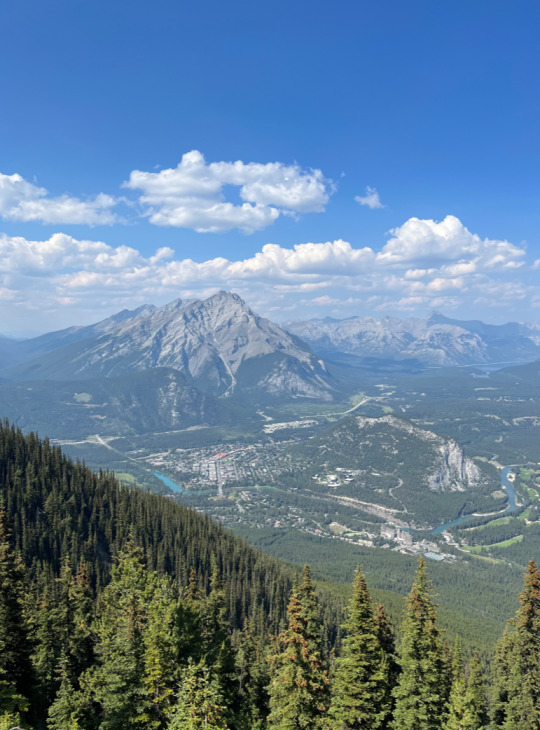
As a visual learner, my venture into environmental interpretation starts with a deep understanding of my preferred learning style. Visual elements have consistently played a big role in both my academic and personal life, from participating in hobbies like watching movies and drawing. I have recognized that I succeed in classes that have visual aids and classes in which I study using diagrams and visuals which have also fostered a keen interest in the art of visual storytelling.
Catering to different learning styles is an important skill as an environmental interpreter (Dr. Hooykaas, n.d.). The visual richness of Banff provides an ideal place for engaging auditory, kinesthetic, and visual learners alike. The interpreter's art is in constructing an experience that resonates with each visitor's particular manner of learning.
Considering this, my role can entail:
Visual Storytelling vlogs: Crafting captivating vlogs for visual learners by showcasing Banff's scenery through bright visuals, panoramic views, and wildlife encounters. My dream would be vlogging a "Join me on a hike through Banff National Park"
Interactive and in-person nature trips: These are designed for kinesthetic learners who want to explore Banff's trails firsthand. Participants can interact physically, digitally, or both, developing a kinesthetic connection through immersive activities such as tactile encounters, virtual scavenger hunts, and emulating wildlife motions.
Podcast Series including Expert Interview: Developing a podcast series featuring expert interviews on Banff's ecology, geology, and wildlife for auditory learners.
As I consider my ideal role, the guiding questions for environmental interpretation take on new significance. Who am I as an interpreter? I'm a storyteller and a visual, auditory, and tactile narrator of nature’s beauties. Who is my audience? Anyone seeking a greater connection with the landscape of Banff, regardless of their learning style. How can I make this experience meaningful? By creating storylines that go beyond knowledge to trigger emotions and engage multiple learning styles (Dr. Hooykaas, n.d.).
Skills that would offer greater success in this role as a Virtual Guide include:
Effective communication: As a virtual guide in Banff, excellent communication is essential. I will need to communicate information clearly and engagingly in a variety of channels, including vlogs, podcasts, and written content. Tailoring my communication style to appeal to a wide range of audiences, ensures that participants with varying learning styles can connect with and comprehend the material (Beck, Cable, & Knudson, 2018).
Adaptability and technological proficiency: Remaining adaptable and technologically proficient, altering my approach to meet diverse audience needs (Beck, Cable, & Knudson, 2018).
Landscape knowledge: Having the necessary knowledge of landmarks and the history of Banff is essential in creating stories and providing accurate information in my interpretations.
In conclusion, my ideal job as an environmental interpreter finds a home in the stunning surroundings of Banff, Alberta. With an awareness of my visual learning style, I hope to guide others, through this natural symphony, constructing a tapestry of stories that go beyond standard learning.
Below are photographs of the stunning scenery of Banff taken during my visit last summer, which is now one of my all-time favorites. This incredible adventure has fueled my enthusiasm for environmental interpretation, making Banff the ideal location for such a role. I've also given glimpses of my most recent sketches, which are strongly rooted in my visual learning style and highlight my dedication to immersive storytelling.
Reference:
Beck, L., Cable, T. T., & Knudson, D. M. (2018). Interpreting Cultural and Natural Heritage for a Better World (1st ed.). Sagamore Publishing. https://www.sagamorepub.com/products/interpreting-cultural-and-natural-heritage-better-world
Hooykaas, A. (n.d.). Unit 02: Teaching Learners [Lecture notes]. ENVS3000 Nature Interpretation. University of Guelph.
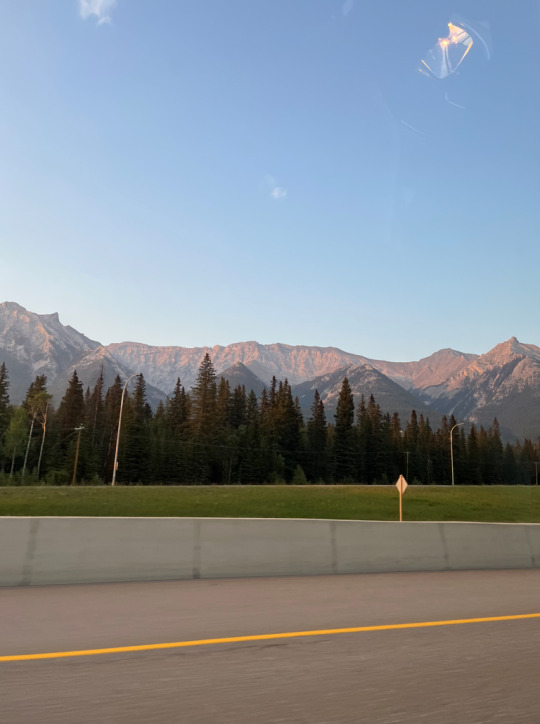
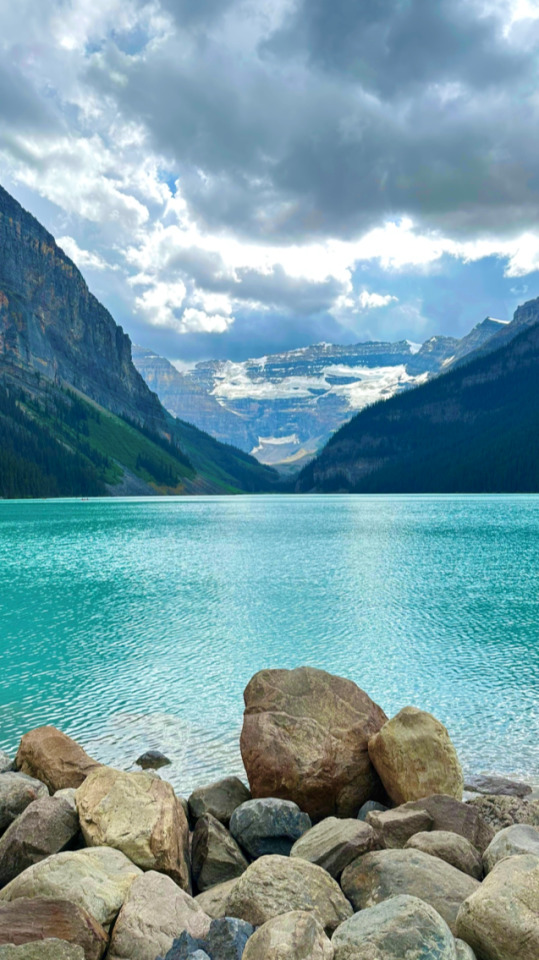
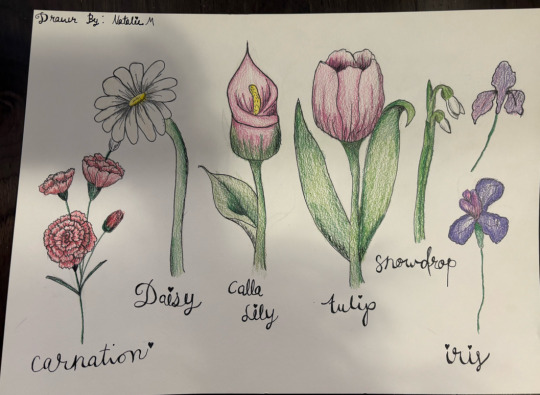
1 note
·
View note
Text
02: Discussing my Dream Job
When considering my ideal role as an environmental interpreter, the first aspect that comes to mind is my preference for doing ‘behind the scenes’ work. As interpreters, one objective is to describe our knowledge to the audience while making it fun and exciting. As someone who is not very good at public speaking, I would ideally let someone else take the lead, especially when the communication is verbal. That said, much more goes into environmental interpretation than just the final delivery.
There are a few roles I would take within environmental interpretation, one of them being conducting field work. I would love to be able to go out into a space of nature and understand the different parts that make up the ecosystem. I would seek information that answers the following questions: What are the prominent tree species? What allows them to grow their best? What organisms are vital to the growth of the specific ecosystem? How might the climate crisis effect this space? Through collecting this information, I would be able to put together a cohesive interpretation of the biological aspects of the ecosystem. Furthermore, I would want to select for the higher quality and more powerful information I gathered to share with the audience, or as described in our textbook, I would try and use ‘The Gift of Precision’ (Beck et al., 2018).
Conducting field work that is accurate and that is of high quality requires a well-rounded set of skills. While there are endless skills that would be beneficial to this role, the ones that stick out to me the most are attention to detail and critical thinking. One would need to have a good eye for the intricate details that come together to form what we call nature. This could include correctly identifying species that look similar, such as the Austrian pine and the red pine. Attention to detail may also include accurately observing animal behaviours, such as not confusing two squirrels for fighting when they are just playing. With the information gathered from having good attention to detail, the next step is to analyze the data and draw conclusions. Using critical thinking skills, one would need to synthesize all the knowledge into a cohesive piece that could subsequently be shared with others. What other skills do you think would be essential to this role?

On the left is an Austrian pine tree needle, and on the right is a red pine tree needle. While there are several ways to distinguish the two trees, bending the needles is common. The Austrian pine will bend, and the red pine will snap.
Ideally, I would begin my endeavours as an environmental interpreter in a space I am familiar with, such as Etobicoke. Once I have mastered the foundational skills, I would be interested in expanding my knowledge to other places around the world. It would be incredible not only to see but also to research areas like Iceland, Australia, Indonesia, and more.
Thank you for reading this week’s post and see you next week,
Kiera
References
Beck, L., Cable, T. T., & Knudson, D. M. (2018). Interpreting cultural and natural heritage for a better world. Sagamore-Venture.
5 notes
·
View notes